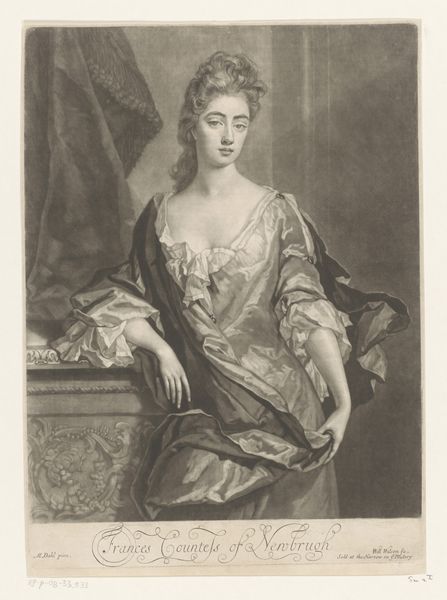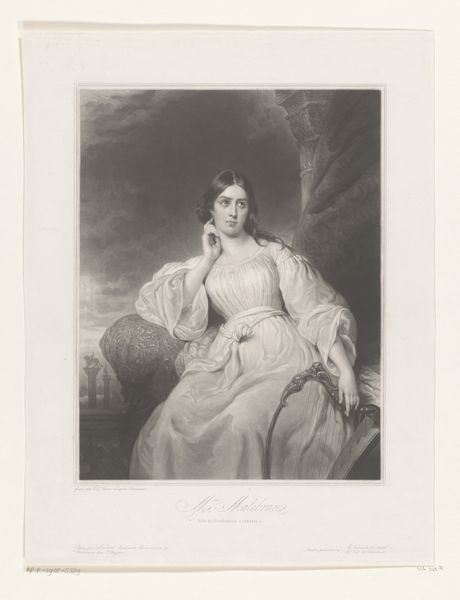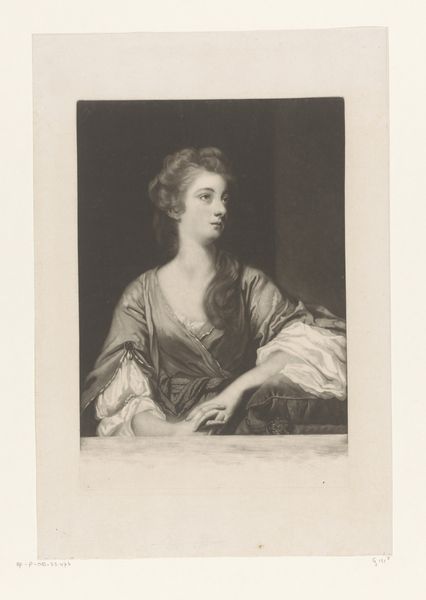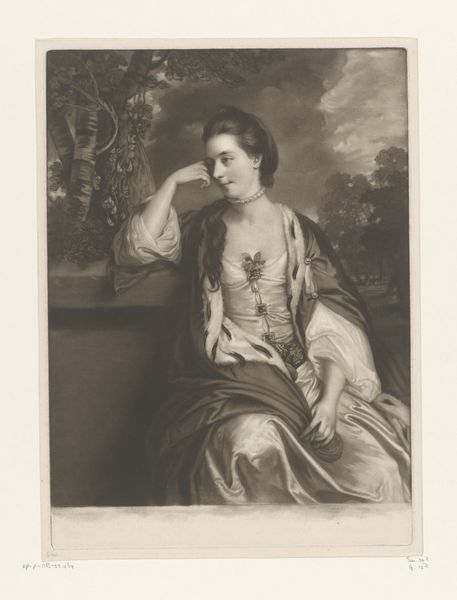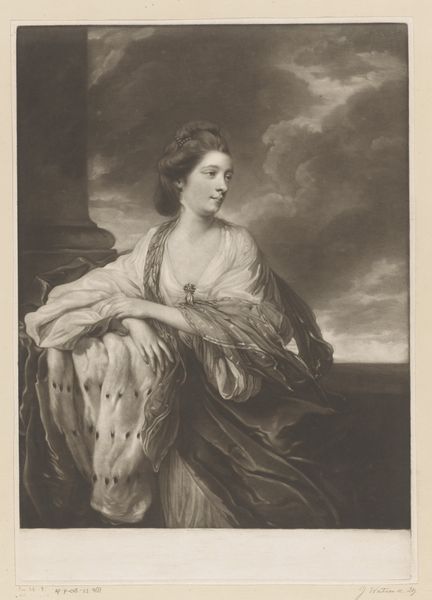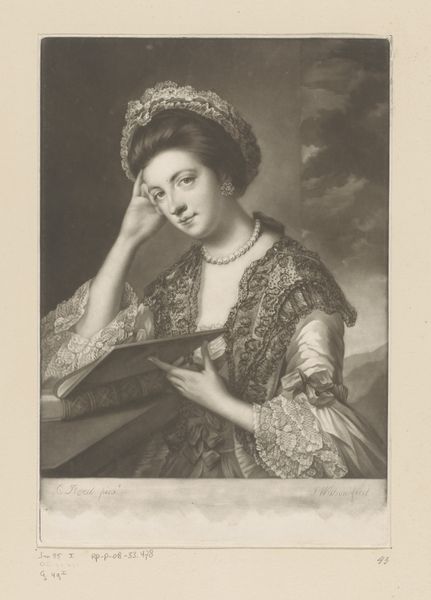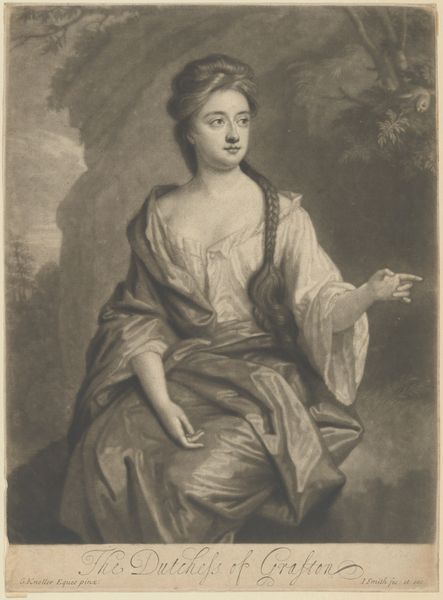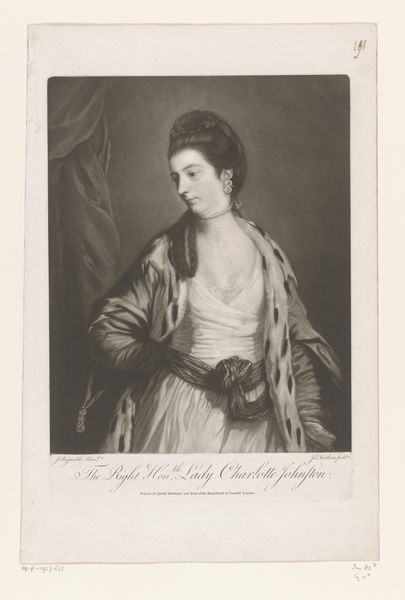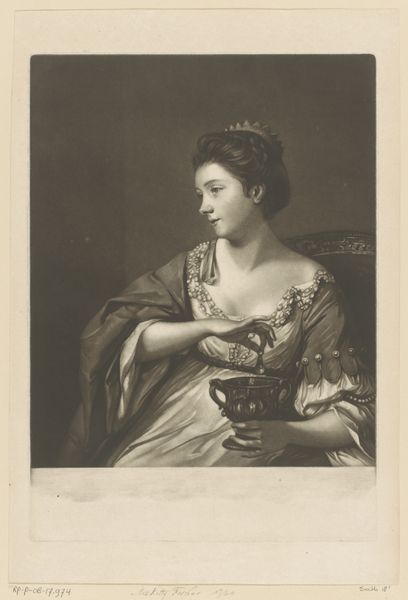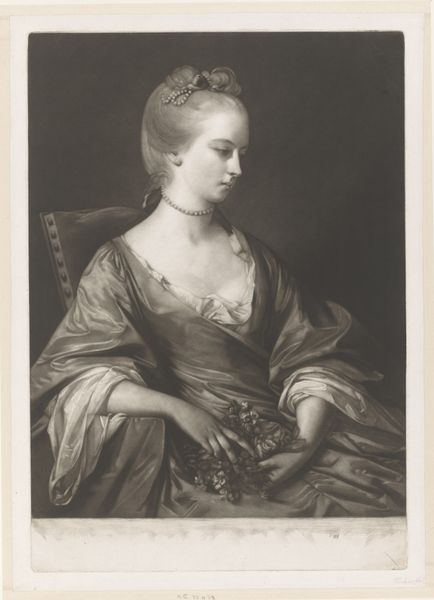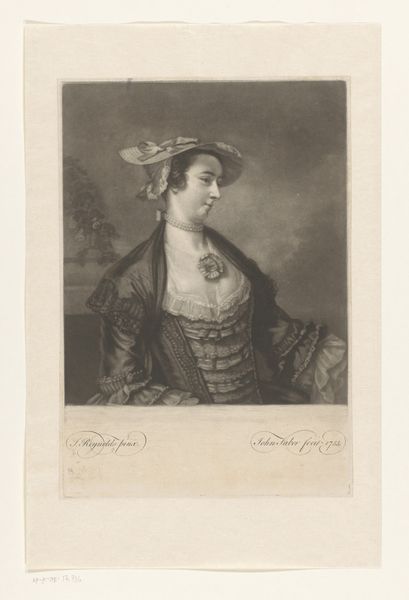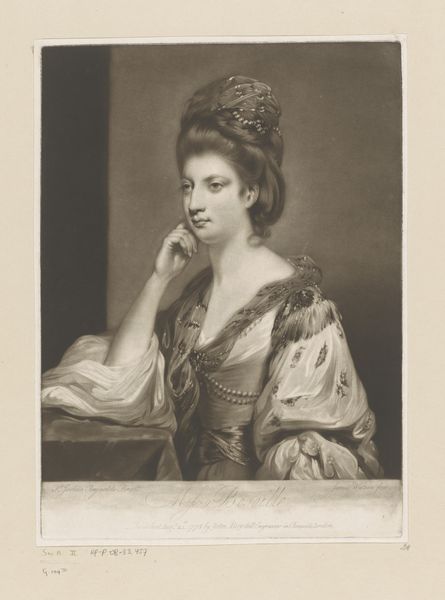
Dimensions: height 384 mm, width 277 mm
Copyright: Rijks Museum: Open Domain
Editor: This is "Portret van een vrouw, mogelijk Isabella Molyneux of Ann Barry" from 1769, engraved by James Watson. I'm immediately drawn to her wistful gaze and the elaborate jewelry. What stories do you think this portrait whispers to us? Curator: Indeed, it’s a compelling piece. Consider the pearl necklace and the jeweled hair ornament. Pearls have long been associated with purity and wealth, while jewels symbolize status and refinement. The sitter’s pose, averted eyes, suggests a moment of introspection, almost a hint of melancholy. How might these symbols interplay with ideas of feminine identity in the 18th century? Editor: So, you’re saying that these weren’t just fashionable accessories, but they are also deeply coded? The overall presentation does feel like she's projecting an ideal. Curator: Precisely. Remember, in portraiture, especially engravings intended for wider circulation, the image isn't just about individual likeness. It's a performance, designed to convey particular messages to society. Do you get the sense of her trying to project a certain emotional ideal or to indicate lineage or membership in a particular social or professional caste system? Editor: It does make me wonder what it was like to *be* this woman in that historical period... Curator: Exactly. Think of portraiture from the Baroque era as a theater. Symbols communicate something about social standing, cultural aspiration, or perhaps the emotional sensibility of the age. In that regard, consider what messages get prioritized (or erased entirely). Editor: That really gives me a lot to consider in future art-viewing! Thanks! Curator: My pleasure! A single viewing might unlock lifetimes.
Comments
No comments
Be the first to comment and join the conversation on the ultimate creative platform.

